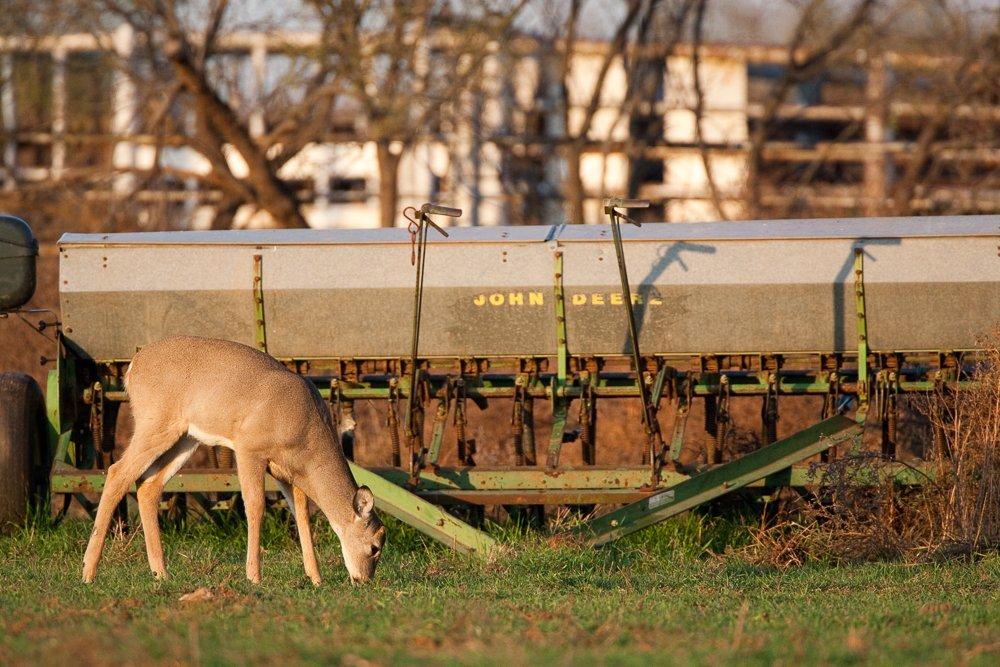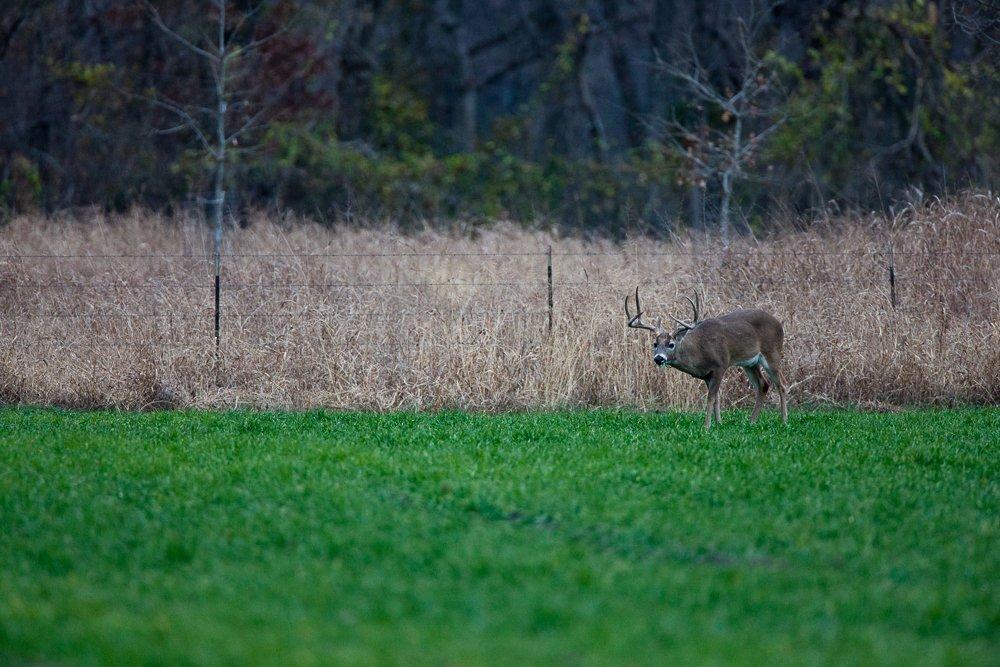Are You Wasting Money on Food Plots?
It's happening right now. Money is being wasted. Time is being squandered. And it's all on account of food plots.
Yes, that's right. You are wasting your time and your money with food plots. I said it. I stand by it. The gauntlet has been dropped. There must come a time when enough is enough.
That time is now. I am finished with food plots.
Maybe that's a bit dramatic. Maybe I'm not completely finished with them. But I had to get your attention. Food plots certainly have their place, and they can produce some excellent results. Trouble is, they don't produce results in many of my hunting situations. In fact, the majority of the food plots I've planted - and, I'd wager, many that you've planted too — were an utter waste of resources.
I'm thinking a change in strategy is in order. So let's begin.
THE MIDWEST SETTING

A couple of years ago, I established two of the finest food plots I've ever put in. They totaled about 2 acres in size and were absolutely bursting with greenery and bulbous turnips, sugar beets and radishes. In a year that saw intense drought, I kept those plots hydrated. Turnips, hundreds of them, grew to the size of cantaloupes.
The deer nibbled a bit on the leaves in late October after a couple of frosts, but there was no "maximum drawing power." There was never a clear pattern of use. I figured that would all change once the beans were taken off the nearby fields and the snow began to fly.
I was wrong.
The deer walked right through those plots on their way to scrounge in harvested bean fields throughout December and January. When I checked the plots during turkey season in the spring, there were still hundreds of turnips lying atop the ground, rotting in the spring sun.
And that is not a singular experience. In fact, I'm not sure I've ever seen a food plot that truly became a destination spot for deer in my area. Sure, they see sporadic use, but nothing like what I've seen on TV. And therein is the difference: I'm not hunting the types of places seen on TV.
PLENTY TO EAT, NOWHERE TO HIDE

What's in short supply? Places to hide. Places where hunters aren't stepping on them every day.
For example, one of the areas that I planted as a food plot that fall is about an acre in size. It's in the middle of row crop country, at the base of a hill that contains a thin stand of native grasses. The plot location is bordered by a drainage ditch lined with mature cottonwoods. On the other side of that tree row is another fallow field.
While the food plot seemed to be in an ideal location because the tree line created a perfect funnel, deer actually used the area less than they previously had once the plot was established. The food plot didn't provide any security cover. The deer altered their pattern of movement to follow a path with more cover. They didn't need the food. There are hundreds of acres of agricultural fields nearby. Rather than expose themselves while traveling to a food source, they simply traveled a bit farther to a food source that allowed them safer passage.
When it comes to hunting pressured deer, security trumps food. I suspect this is why food plots work so well in areas with limited hunting pressure. Deer will almost always use the path of least resistance. Establish a quality plot along that path, and they'll hit it with gusto so long as they feel safe. In some areas of limited hunting pressure, they feel safe just about anywhere. But in other areas, they plan every step around avoiding hunters. Your food plot could be as sweet and lush as any food the deer could ever eat. But if it's not located in an area of security, they won't use it.
THE NEW PLAN
Rather than blowing my budget on planting more deer food, I've started to focus more on cover. In the woods, there are a number of natural openings that I've used as plot locations in the past. I establish these plots using nothing more than a hand sprayer and a rake, a no-frills process that I wrote about for Realtree a couple years ago.
- Re-establish Natural Cover: Many of the openings inside the timber that I've previously used as food plots were once filled with brush, multiflora rose and other bushes. Those were removed and killed off. Many of those areas will now be allowed to revert to brush and thicket. I'll still give those openings attention, and I'll likely still establish food plots in them. But I'll spend far more time focusing on the cover around those plots.
- Fertilize and Enhance Existing Cover: Other existing openings that I haven't planted will get a fertilizer treatment or selective tree removal to allow more sunlight penetration and further enhance the level of nasty that the cover can provide. To enhance existing cover, simply apply fertilizer to any vegetation in the area. Thickets are a good thing where I hunt, and they can be enhanced with an application of fertilizer to help them grow fuller, thicker and nastier.
- Hinge-Cut: I'll use a chainsaw to hinge-cut undesirable trees (check out the video above). By cutting partially through the tree and allowing it to tip over without breaking, the tree will continue to live and create a dense area of cover. Michigan has been hit particularly hard by emerald ash borers, and nearly 100 percent of ash trees are now dead. The understory will almost certainly thicken up with the increased penetration of sunlight as a result. I'll help that along by felling many of those dead trees. The trunks will be removed for firewood, while the tops will be left to provide additional cover.
- Add Plot Screen: This year, when I do sow a food plot, I'm going fence in the perimeters of them with Plot Screen, a blend from Frigid Forage that contains Egyptian wheat and sorghums. The stuff grows to about 7 feet high and creates an incredible area of cover. If desired, I can sow a strip of oats or clover in the center to provide a bit of food. But it's that thick, beautiful cover that will draw deer, especially when hunting pressure ramps up. This cover can be planted wherever I want to create a true hidey-hole plot, and to help hide my entrance and exit.
- Ask Permission: Keep in mind that I'm not a landowner. All of the places that I hunt are owned by others, and landowner permission is required to do this kind of work. Getting that permission, however, is fairly easy because those dead ash trees need to be removed. If you're in a similar situation, share the firewood with the landowner, and I'll bet you'll have no trouble getting permission to do some of the work.
Sidebar: What About Big Crop Fields?
If cover is so important, you say, why do deer frequently use those big, wide-open crop fields?
For the same reasons. Security. Those big fields are just that - big. Think about how deer use them. Do they feed along the edges? Or do they peer cautiously out of the timber before trotting into the middle of the field? I know the deer I hunt survey the field very carefully before trotting into the middle of it, where they can see danger from afar. They don't linger around the edges where a predator like you could be waiting.







